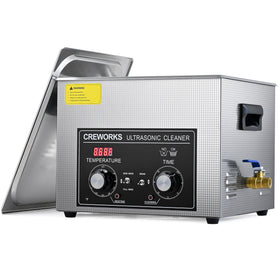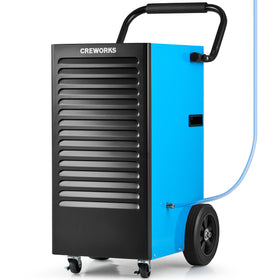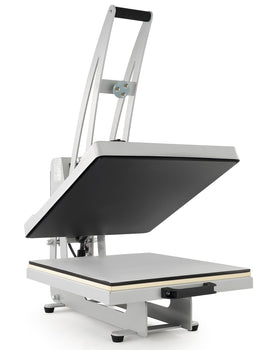With over 10000+ orders
With over 10000+ orders
For exact metal drilling, especially on-site or difficult locations, a magnetic drill (mag drill) is a critical tool. A magnetic drill is different than a typical drill press or handheld drill in that it combines power, portability, and precision to drill clean holes directly into ferrous metal surfaces. Metal fabricators, construction workers, and mechanics use it every day and DIY enthusiasts can also benefit from its efficiency and accuracy. In this guide, we’ll walk you through the key components, safety tips, and how to use a magnetic drill effectively.

Following these steps will help you avoid common accidents and ensure a smooth drilling process.
For the following step-by-step instructions, we’re using the Creworks portable 1100W magnetic drill as an example. Keep in mind that other magnetic drills might work a little differently, so it’s always a good idea to check your own model’s manual to make sure you’re drilling safely and getting the best performance from your tool.
Examine the workpiece for suitability and sturdiness. Remove paint, varnish, rust, etc. and secure any loose pieces using strong mechanical devices such as clamps or vises as needed.
Connect the device to a grounded 3-prong power outlet. Do not use a 3-to-2 prong adapter or ungrounded power strip.
Turn the valve knob underneath the coolant tank counterclockwise to allow water to flow into the spindle.
For inclined, vertical, or inverted drilling, thread the safety rope (K) through the drill’s main handle and attach it securely to some firm location nearby. The rope should be loose enough to allow exact positioning and taut enough to hold the drill without injury in the event of some accident.
NOTE: NEVER stand directly under the drill when it is used in an elevated position.
Place the base of this device onto your substrate, aligning the drill bit with the location of the desired hole.
For a nonmetallic or nonferrous substrate, hold firmly and press down. For a ferrous substrate, hold this device against the metal and flip the magnetizing power switch to I to magnetize the base. The magnetizing indicator light should turn on.
Attach the drill bit firmly to the workpiece by rotating a feed handle counterclockwise. If a strong attachment cannot be made, DO NOT continue. Reposition the drill and realign the bit.
Flip the main power switch to I. The spindle will begin to rotate.
NOTE: NEVER touch components of this device while they are in motion.
Rotate the feed handles counterclockwise, applying light and even force to allow the bit to penetrate into the workpiece on its own.
NOTE: DO NOT attempt to force the device using the feed handles as this will not help the bit but may damage the machine. If the drill becomes stuck or requires lubrication or if the coolant tank runs dry, turn off and unplug the device before making adjustments, lubricating, or refilling the tank.
When finished with your workpiece, rotate the feed handles clockwise to separate the drill bit from the workpiece and flip the main power switch to O to stop drilling. If using an annular cutter/core drill bit, remove the pilot pin after allowing time for it to cool or while wearing sufficient protection against its stored heat. If magnetization is used, flip the magnetizing power switch to O and remove the drill from your workpiece. When drilling in an inclined, vertical, or inverted position, hold the drill firmly before demagnetizing the base and disconnecting the safety rope.
Continue with any other workpieces in the same fashion.
When finished, close the coolant tank’s valve by turning its knob completely clockwise.

Even with the best tools, applying a few professional tips can improve your results:
Using a high-quality drill can make these tips even easier to follow. For example, the Creworks Portable 1100W Magnetic Drill offers features that help you work efficiently and safely:
These simple practices, combined with a reliable drill like the Creworks 1100W, will help you achieve accurate, efficient, and safe drilling every time.

To get the most out of your magnetic drill, avoid these common pitfalls:
Being mindful of these mistakes can save you time, money, and potential injuries.
A magnetic drill is a great combination of strength, precision, and portability. It's a an essential tool for anyone who works with metal. By following simple safety tips, using the right techniques, and keeping your drill well-maintained, you can achieve accurate, professional-quality results. If you're looking for a re liable product, the Creworks Magnetic Drill Press is an excellent option for you.












Leave a comment